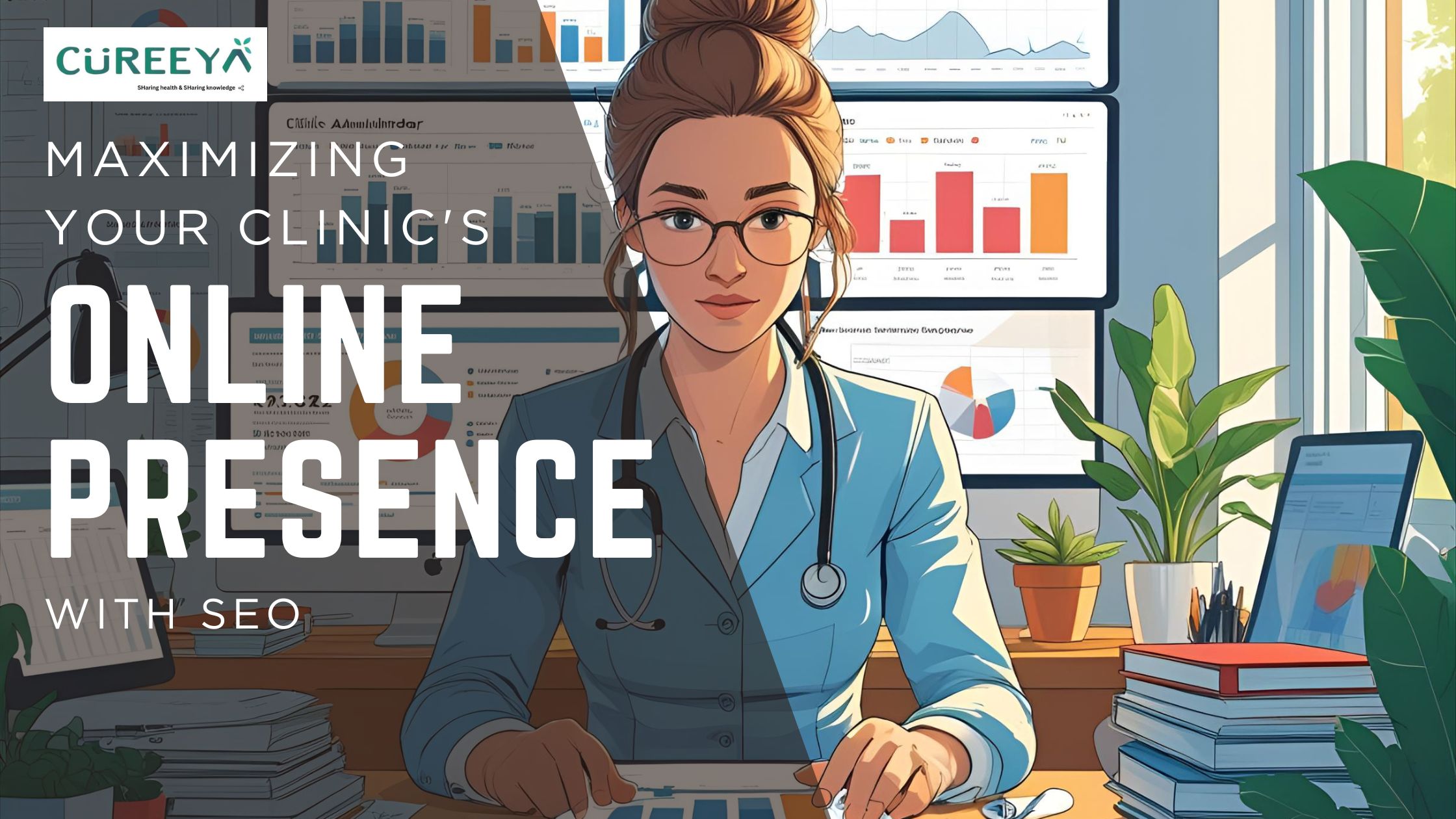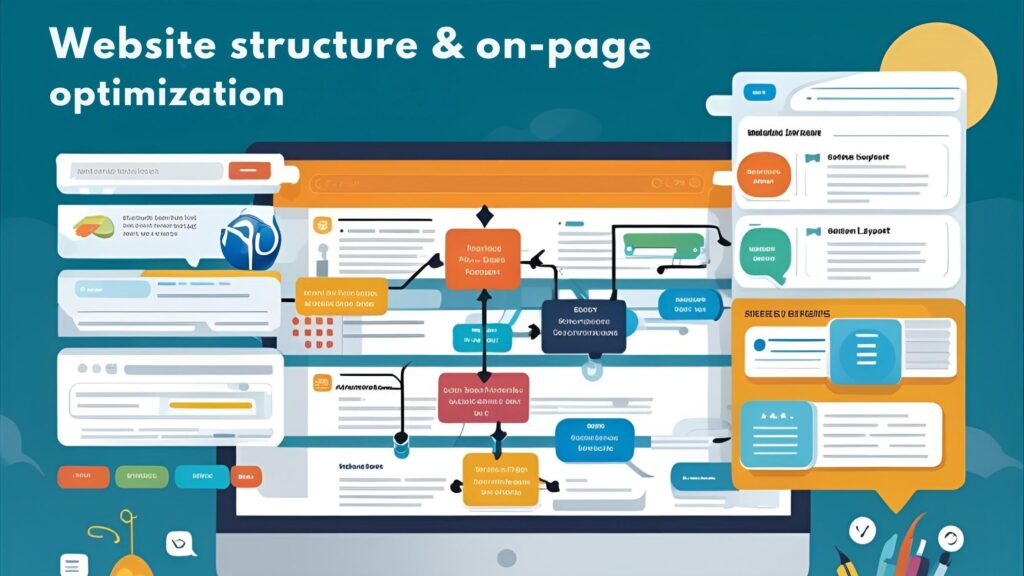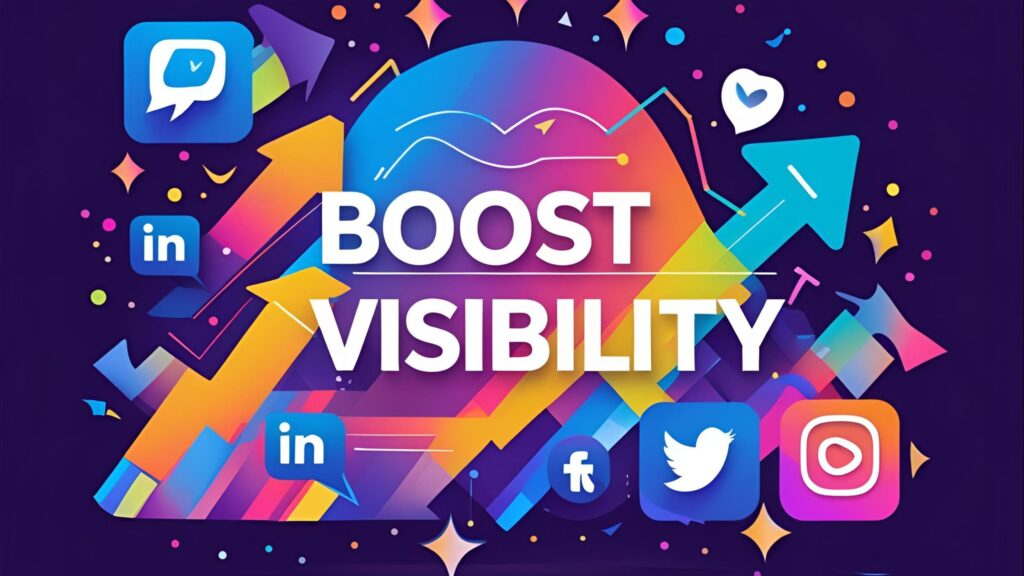
Why Healthcare SEO Matters More Than Ever
Think of SEO as your clinic’s online storefront. When someone Googles “clinic near me,” staggering statistics tell us this matters:
- 88% of patients search online before booking an appointment
- 75% of patients look for healthcare providers online—and 49% of those searches actually convert.
So if you’re not first on Google, you’re invisible. SEO gives you that visibility. It builds trust. And—most importantly—it brings real patients through your door (or onto your booking calendar).
1. Lay a Solid SEO Foundation: Structure, Keywords & Technicals
a) Website Structure & On‑Page Optimization

Your website must be intuitive—no guesswork. Think:
- Clear menus: Home, Services, About, Blog, Contact.
- Mobile-friendly design: about 80% of healthcare traffic is mobile .
- Fast load speeds: A 1‑second delay = 7% fewer conversions.
👉 Tools like Google’s PageSpeed Insights and mobile test are free and valuable.
b) Smart Keyword Research

Avoid generic medical jargon. Use:
- Patient‑friendly terms: e.g., “skin rash” vs “dermatitis” and match them with expert keywords.
- Hyper‑local keywords: “cardio clinic [Your City] • Family doctor near [Neighborhood].”
- Long‑tail keywords: “adult asthma treatment options after COVID.”
By targeting high‑intent, specific searches, you’ll bring in ready-to-book patients.
c) Technical SEO

Small fixes. Big gains:
- HTTPS for trust and privacy.
- Schema markup with MedicalBusiness, Service, FAQ.
- XML sitemaps and clean URL structure.
These aren’t flashy. But they help Google crawl and index your content better, setting a foundation for visibility.
2. Content That Converts: Education, Localization & Trend Focus

a) Answer Patient Questions
Patients type what they think. Examples:
- “How to stop shoulder pain after tennis.”
- “What to eat before knee surgery.”
Create blog posts with headings like “3 Ways to Ease Shoulder Pain After Sports” or “Meal Plan: Pre‑Knee Surgery to Aid Recovery.” Easy-to-read, bullet-pointed, conversational—and linked to your clinic’s services.
📈 Fact: Healthcare blogs with FAQs reduce bounce rate by 26% and increase engagement .
b) Local Landing Pages
For clinics with multiple branches:
- Create unique pages for each: “Clinic in [Neighborhood].”
- Include local landmarks, events, patient reviews.
- Add maps, photos, and local schema.
Personalized pages improve local ranking and patient trust.
c) Visual & Interactive Content
Use:
- Short explainer videos (60–90s) on services—YouTube not only helps SEO but adds credibility.
- Quizzes & symptom-checkers: interactive tools boost engagement 43% .
People trust visuals. They engage more. They convert. Verify your video descriptions and transcripts are SEO-optimized too.
3. Reviews & Reputation: Build Trust, Boost Visibility

a) Encourage & Manage Reviews
After appointments, ask patients:
“Could you leave a Google review? It really helps others find our clinic.”
- Aim for 20–30 Google reviews at 4+ stars.
- 78% of patients trust online reviews.
b) Consistent NAP & Directory Listings
Name, Address, Phone (NAP) must match across platforms:
- Google My Business, Bing Local, WebMD, ZocDoc, Healthgrades, and local directories.
- About 48% of healthcare listings have errors—fix these.
Consistent information improves local SEO and helps you show up in the Google Map Pack.
c) Respond to Reviews
Reply to every review—good and bad. A sincere apology or follow-up builds trust. Patients notice when you care. Google notices too.
4. Off‑Page SEO: Link Building, Partnerships & Authority

a) High‑Quality Backlinks
Prioritize:
- .gov / .edu sites: sites linking to you can boost ranking 21–40% .
- Guest posts on top medical publications.
- Local partnerships (events, sponsorships).
Backlinks from credible sites—like WebMD or a university—boost trust with Google.
b) Social Media & Local PR
Social itself doesn’t directly boost SEO, but it drives traffic and brand visibility .
- Share case studies, patient stories, local events.
- Encourage social shares and comments.
- Collaborate with local health influencers (e.g., physio, nutritionist) for mentions and backlinks.
c) Press Releases & Local Citations
Launch a community initiative?
Publish a press release.
Share on local news websites.
Use structured data.
This builds local awareness—and links.
5. Measurable ROI & Optimization

a) Track Your Metrics
Watch:
- Organic traffic growth and search rankings.
- Conversion rate: Most healthcare sites average ~3%, but optimized ones hit 5.6% (.
- Patient acquisition cost: SEO leads cost ~61% less than traditional ads and deliver ~2.8× ROI .
b) Regular Audits & Updates
- Quarterly content audits: update medical info, citations, treatment protocols.
- Check technical issues: broken links, page speed, mobile usability.
- Stay current on Google’s E‑A‑T and YMYL guidelines.
Clinics updating content regularly earn 35% more traffic.
6. Why Cureeya Helps—And What Others Miss
a) Booking‑Optimized SEO Tools
Cureeya’s booking widget is built for patient engagement and SEO:
- Auto-reminders and seamless online booking keep patients on-site longer.
- These metrics—dwell time, engagement—boost Google rankings.
b) Voice & Video SEO Built In
Cureeya helps optimize for voice search (“Hey Google, book a dentist appointment nearby”) and integrates video—two areas often ignored by competitors.
c) Patient Journey Mapping
Cureeya doesn’t just track keywords. It traces the full patient journey:
- Symptom search
- Informational content
- Service page
- Booking
This end-to-end funnel keeps optimization focused on patient behavior—turning content into consultations.
Call to Action: Time to Take Action
You’ve learned the fundamentals:
- Structuring your site
- Writing local, helpful content
- Building reputation and backlinks
- Measuring real ROI
Ready to outperform other clinics? Cureeya can be your guide—offering booking systems, optimized content frameworks, voice/video SEO, and real patient journey insights.
👉 Connect with Cureeya today.
Start ranking higher.
Get visible.
Bring in patients.
Grow sustainably.
FAQs
Q1: How long until SEO shows results?
Expect 3–6 months for major traffic gains. Localized efforts can yield visible improvements in 4–8 weeks with optimized content and reviews.
Q2: What’s a good number of Google reviews?
Aim for 20–30, ideally spread over time, with consistent 4–5 star ratings.
Q3: Should I use ads with SEO?
Yes. Ads complement SEO. Combined, they double your presence. Ad results start fast, SEO builds long-term value
Q4: Do I need video content?
Definitely. Video keeps users on your site and improves rankings. Tutorials and FAQs in short video format work great.
Q5: What’s voice search optimization?
It means targeting conversational phrases like “where can I find a headache clinic?” and including FAQ sections explicitly formatted for voice.
By combining foundational SEO, localized content, reputation management, link authority, and tools like Cureeya, your clinic will stand out exactly where patients are searching. It’s not a quick fix—it’s a tailored, measurable strategy. And it works.



